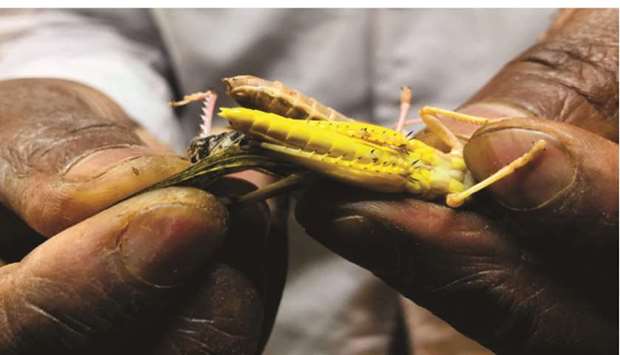Eat them, poison them, and use scent to drive them to cannibalism — as a second wave of locusts threatens to devour East Africa’s crops, scientists in a Nairobi lab are experimenting with novel ways to kill them.
Swarms are the worst for three generations, encouraged by unseasonably wet weather and dispersed by a record number of cyclones.
The destructive pests could cost East Africa and Yemen $8.5bn this year, the World Bank has said.
Locusts are usually controlled by spraying them with pesticides before they can fly, but the chemicals can damage other insects and the environment.
So scientists at the International Centre of Insect Physiology and Ecology (ICIPE) are experimenting with biopesticides and the use of locusts as human and animal food as they look for environmentally-friendly extermination methods.
ICIPE researchers were a part of a group that discovered an isolate from a fungus, Metharizium acridum, could kill locusts without harming other creatures.
The isolate is now being used across East Africa.
Now researchers are pouring through 500 other fungi and microbes in their bio bank in the hope of discovering another locust poison.
ICIPE scientist Baldwyn Torto’s research has mostly focused on locust smells and pheromones.
Before locusts can fly they have a certain chemistry and therefore a unique smell that allows them to remain in a group, he said.
That smell changes as locusts mature. Disseminating the scent of an adult among the young can help destroy swarms.
“They get disoriented, the group breaks into pieces, they cannibalise each other and they become even more susceptible to biopesticides,” he said.

A scientist handles a locust used for research inside a laboratory at the International Centre of Insect Physiology and Ecology in Nairobi.


